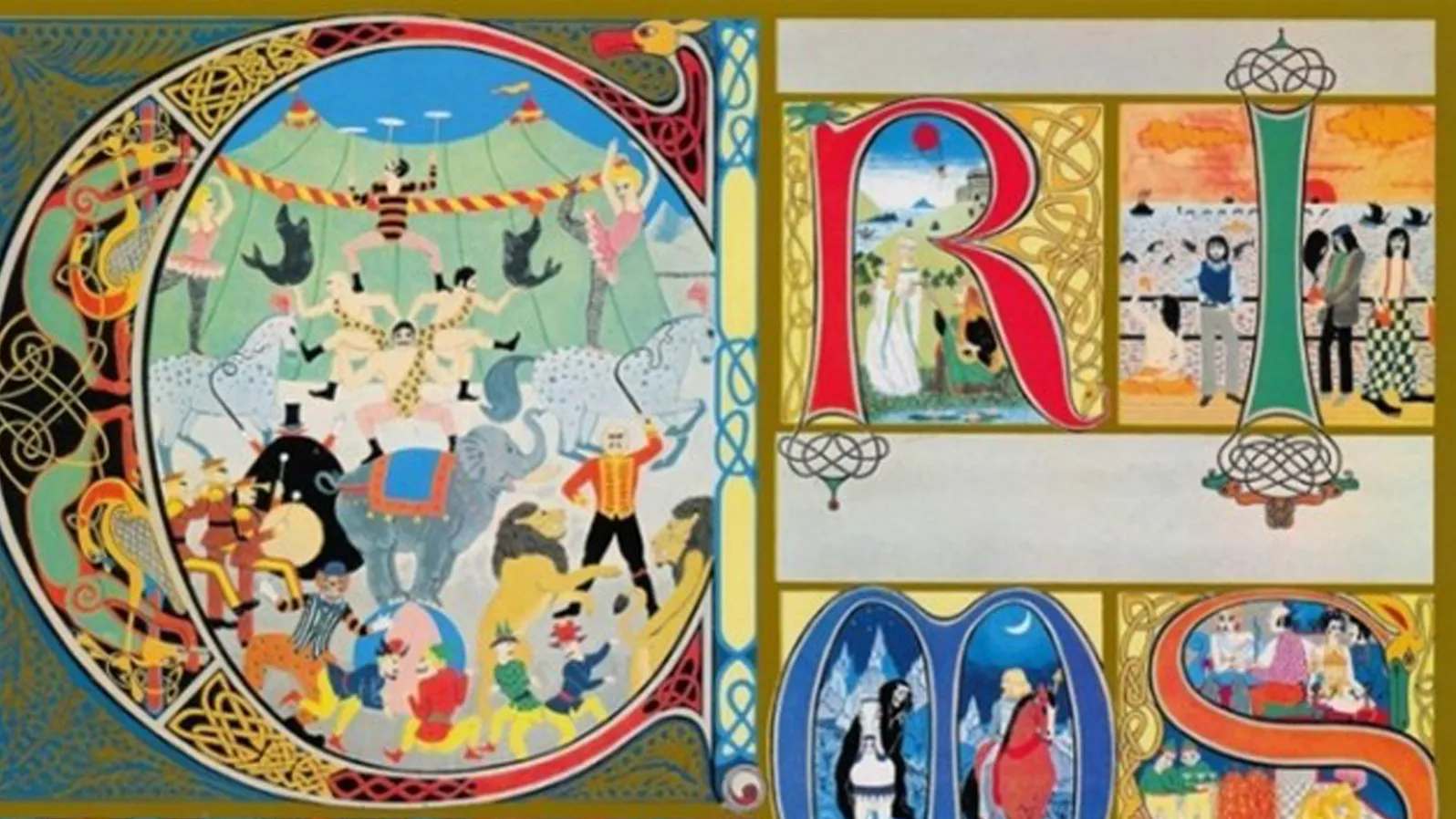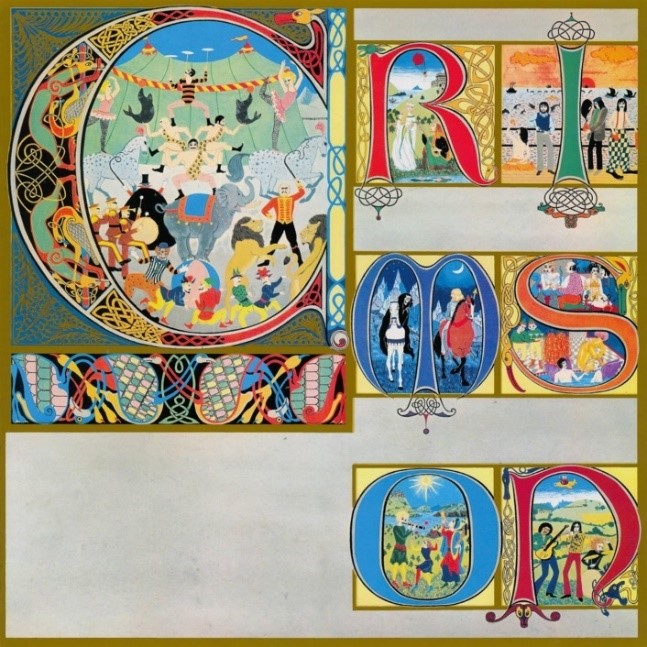
King Crimson – Lizard [1970]
Sometimes a musician is not happy with an LP. Then he prefers not to talk about it. Understandable.

Guitarist Robert Fripp, King of the Eccentric, tackles this differently. He released the album ‘Lizard’ with his group King Crimson in 1970 and said about it:
‘In general, the album is unlistenable. I can't recommend anyone to spend their hard-earned money on this album, unless they want to take it to parties and play it for unwanted guests.’
And what if there are fans who still enjoy ‘Lizard'? Fripp: ‘They must be very strange.’
Fifty years of Boerderij for me means a search for the origins of progressive rock music, because that is what the Boerderij has stood for all this time: prog rock! You automatically end up with King Crimson. The first LP, ‘In the Court’, is considered one of the first real prog rock albums. But I’ve already written a blog about that. Now it’s ‘Lizard’s turn, because it has one of the most beautiful and strangest album covers.
But first, a word about prog rock. Maybe it’s a good idea to provide a definition of it first, so that we’re all talking about the same thing. For me, prog rock is a mixture of rock, jazz, classical music and folk music. A potpourri of musical genres, mixed in a blender, resulting in a somewhat chaotic and undanceable type of music, with mainly very long songs with long solos by virtuoso musicians.
Back to Robert Fripp. ‘Lizard’ is the last in the so-called King Crimson-1 period. After the success of ‘In the Court’ and a grueling tour in America, the band fell apart. Bassist Greg Lake wanted to continue with keyboardist Keith Emerson and drummer Carl Palmer. Keyboardist Ian McDonald was homesick for his English girlfriend and didn't want to tour the world anymore.
But Fripp had to move on, because there was still this contract with Island Records for two successors to 'In the Court'. He gathered some musician friends and studio musicians and released 'In the Wake of Poseidon' and 'Lizard' in 1970.
After that, it was quiet around Fripp for more than two years. In 1973, he made a fresh start with King Crimson, King Crimson-2, with drummer Bill Bruford, bassist John Wetton and keyboardist/violinist David Cross. The four of them reached unprecedented heights with the LPs 'Larks Tongues' and 'Starless and Bible Black'
But 'Lizard' is a blooper according to Robert Fripp. There’s some truth in that. There are sufficient ideas on the album, but they don't work. It seems as if the different pieces of music are unsure whether they should connect with a central theme or whether they should remain independent. Add to this the otherworldly lyrics – once again by Fripp’s friend Pete Sinfield – and you have, indeed, a generally unlistenable album.
Sinfield was also partly responsible for the cover. He came into contact with designer Gini Barris, who had a part-time job as a cleaner for singer Julie Felix. Barris had already designed the inside of Felix’s album ‘Clotho’s Web’. For ‘Lizard’ she suggested making medieval miniatures, a passion of hers. Sinfield thought that would be a good idea. Barris got to work. She worked solely with the lyrics that Sinfield had given her; she didn’t hear the music until after the album was released.
The outside of the album cover consists of the words ‘King Crimson’, spelled out in elegant medieval letters. The word ‘King’ is on the back and the word ‘Crimson’ is on the front, with each letter containing images of Sinfield’s lyrics. For example, the letter C contains the lyrics of the song Circus Pate, Sinfield's allegory about life as a great illusion. We see seals, an elephant, and circus artists such as the lion tamer and strong men.
I could go through all of the letters, but then this story would never end. So here are a few examples:
In the letter I we see the Beatles, a reference to the lyrics Happy Family.
In the letter N we see the musicians Jimi Hendrix, Ginger Baker and Peter Gabriel, although it is still unclear to this day why they appear on the cover.
After drawing the inner sleeve of Julie Felix's LP and this cover of 'Lizard', Gini Barris more or less disappeared from the face of the earth. Still, I am curious why there were no more album covers by her. A life of sex, drugs and rock 'n roll? Or just became a housewife? Various attempts to track her down via the internet and email end in a dead end.
And I dare not approach Robert Fripp about this LP. Afraid he finds me very strange too.
Gerrit-Jan Vrielink
Translator: Alex Driessen
